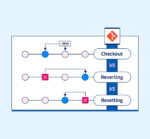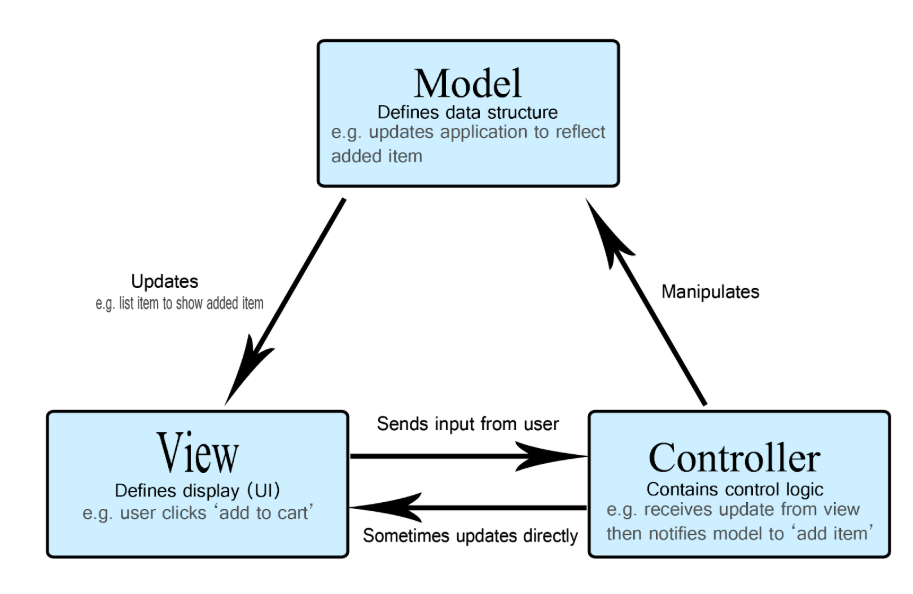As Python applications become bigger and more complex, one starts to face a quagmire of maintaining that codebase. Badly structured applications may lead to convoluted logic, code duplication, and hard-to-trace bugs. Enter Python MVC architecture.
MVC (Model-View-Controller) is a software design pattern that helps you organize code using MVC in Python, making it easier to scale, debug, and maintain over time. This guide will introduce you to what the Python Model View Controller architecture is, how it is relevant for real-world applications, and its implementation through a project example.
Let’s dive in.
What is MVC Architecture in Python?
The MVC architecture in Python separates an application into three main components:
- Model: Represents the data and business logic.
- View: It is also known as UI or output representation.
- Controller: The Controller works as a bridge between the Model and the View by dealing with input and coordinating responses.
By doing this, it becomes easier to develop modular, testable, and scalable Python applications.
Why Use MVC for Scalable Applications?
While developing scalable applications in Python, code structure becomes as important as logic. This is where MVC comes in:
- Maintainability: Changes made to any of the three components do not affect others, so maintainability is enhanced.
- Reusability: Logic and interface can be reused or replaced without interfering with existing application code.
- Parallel development: A team will be able to work in parallel on models, views, and controllers without stepping on each other’s toes.
- Cleaner debugging: A more modular architecture enables simpler isolation of bugs.
Large projects especially web or GUI applications truly call for Python MVC architecture.
Project Example: To-Do App Using MVC in Python
Let us create a simple To-Do List Application based on the Model View Controller approach in Python. This example will explain how to MVC code in Python with examples.
Folder Structure
todo_mvc/
│
├── model.py
├── view.py
├── controller.py
└── main.py
Model (model.py)
Handles task data and operations.
class TaskModel:
def __init__(self):
self.tasks = []
def add_task(self, task):
self.tasks.append(task)
def remove_task(self, index):
if 0 <= index < len(self.tasks):
del self.tasks[index]
def get_tasks(self):
return self.tasks
Here, we encapsulate data logic inside the Model. This makes it scalable for future database integration.
View (view.py)
Displays the UI and gets user input.
class TaskView:
def show_tasks(self, tasks):
print(“\nTo-Do List:”)
for i, task in enumerate(tasks):
print(f”{i + 1}. {task}”)
def get_input(self, prompt):
return input(prompt)
This View focuses purely on displaying tasks and taking input no business logic involved.
Controller (controller.py)
Coordinates between the model and view.
from model import TaskModel
from view import TaskView
class TaskController:
def __init__(self):
self.model = TaskModel()
self.view = TaskView()
def run(self):
while True:
self.view.show_tasks(self.model.get_tasks())
action = self.view.get_input(“Add (a), Remove (r), Quit (q): “).lower()
if action == ‘a’:
task = self.view.get_input(“Enter new task: “)
self.model.add_task(task)
elif action == ‘r’:
index = int(self.view.get_input(“Enter task number to remove: “)) – 1
self.model.remove_task(index)
elif action == ‘q
break
Main Entry (main.py)
from controller import TaskController
if __name__ == “__main__”:
app = TaskController()
app.run()
Benefits of Python MVC Architecture in Action
This simple To-Do app can be expanded easily:
- Integrate a saving mechanism – file/database – in the Model
- Switch Views, e.g., to Tkinter or Flask
- Include logging or analytics within the Controller
Such as in architecture mvc in python, responsibilities were clearly defined and extension.
Now even a complex e-commerce backend, an admin panel on a government basis, or a microservice can be imagined to be built with this pattern of scalability.
Testing and Debugging Made Easier
And you can test each layer separately as you organize code along the mvc lines in python:
- Unit-test Model for logic related to data
- Mock the View, via CLI or GUI
- Run integration tests of the controller
This modular approach lends itself to developing scalable applications in Python intended to be maintained for extended periods.
When Should You Use MVC in Python?
The model view controller pattern is particularly useful when:
- Building medium to large apps
- Team work
- Frequent changes in UI/backend
- Long-term scalability in mind
- Developing GUI or web-based Python projects
For very small scripts, it’s likely to be overkill – but let your application grow and it will become very important.
Advanced Tip: MVC with Frameworks
Frameworks like Django and Flask also loosely follow the python MVC architecture:
- Django’s Model (models.py), Template (views), and View (controller logic) loosely correspond to MVC.
- Flask permits manual implementation of MVC with flexibility; especially for microservices or APIs.
Final Thoughts
Whether you’re building a simple app or a full-fledged platform, the mvc architecture in python provides a clean, organized, and scalable foundation.
To summarize:
- Use MVC to separate concerns
- Make your Python apps more maintainable
- Build larger applications with team collaboration in mind
- Organize code using MVC in Python for better debugging and testing
Implemented a working Model View Controller Python project from scratch









